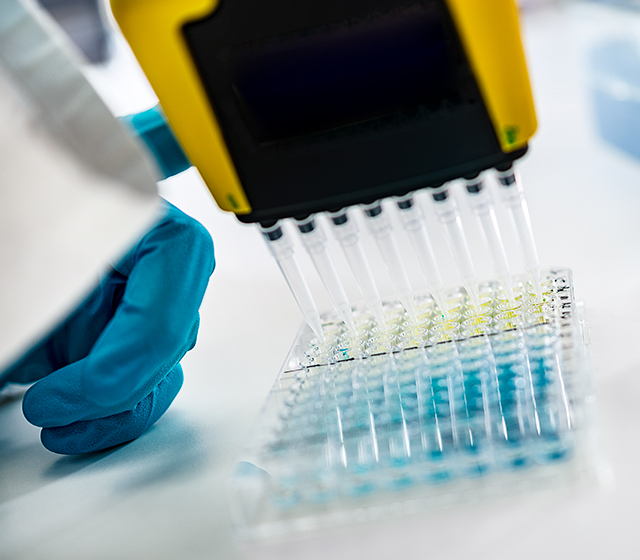Cell Viability & Cytotoxicity Assay Kits
SensoLyte® Assay kits for Cell Viability, Proliferation and Cytotoxicity
Cell health and metabolism can be affected by physical and chemical agents via a variety of mechanisms such as destruction of cell membranes, prevention of protein synthesis, or irreversible binding to receptors and so on. The monitoring of cell viability, proliferation and cytotoxicity is key to understanding cell health for basic research, toxicology and pharmacological studies.
These assays are widely used to study the impact of chemicals such as pollutants and pesticides on cells and for drug screening. In particular, these assays are used in cancer research and cancer drug discovery to evaluate both compound toxicity and tumor cell growth inhibition during drug development.
AnaSpec features Calcein AM and Lactate dehydrogenase(LDH)/Resorufin fluorescent based assay kits for easy and reliable monitoring of cell viability, proliferation and cytotoxicity.
Benefits:
- Safety – non-radioactive, non-toxic
- Convenience – Ready-to-use reagents, no labeling required
- Accuracy – Correlate well with traditional isotope-based assays
- High throughput screening of cell proliferation or cytotoxicity effect of a variety of compounds
Calcein AM assay
The SensoLyte® Calcein Cell Viability Assay Kit is a rapid and sensitive assay to detect viable cells, and can be used to study cell proliferation, cell cytotoxicity, cell invasion, cell adhesion and cell migration (chemotaxis).
Non-fluorescent Calcein AM is a cell-permeable compound that is converted to fluorescent Calcein, when hydrolyzed by intracellular esterases of living cells. The intensity of calcein’s bright green fluorescence is proportional to the number of live cells present and can be monitored at Ex/Em=494nm/520 nm.
Calcein is also photostable, is not influenced by intracellular pH and does not affect cell proliferation or cell viability.
Lactate dehydrogenase (LDH) activity measurement
Sensolyte™ Cell Viability and Cytotoxicity Assay Kits use a sensitive fluorimetric indicator, resazurin, to measure the activity of lactate dehydrogenase (LDH) in cytoplasm (for live cells) or the medium (for dead cells). The measurement of LDH activity is a well-substantiated method for the quantification of viable cell numbers and the monitoring of cell proliferation. The presence of cytoplasmic LDH in the culture medium caused by the damage of cell membrane integrity is a measurable indicator of cell death and cytotoxicity.

FRET substrates
FRET occurs between a peptide tagged to a donor and an acceptor when placed within 10-100Å of each other resulting in the donor’s excitation fluorescence to be quenched by the acceptor. Enzymatic hydrolysis of the peptide results in recovery of the donor fluorescence following spatial separation of the donor and acceptor upon energy transfer.
| Dye (donor) | Quencher (acceptor) | Donor Ex/Em | |
| SensoLyte® 390 | Mca | Dnp |
•
325/393 nm |
|---|---|---|---|
| SensoLyte® 490 | EDANS | DABCYL |
•
340/490 nm |
| SensoLyte® 520 | 5-FAM or HiLyte™ Fluor 488 | QXL®520 |
•
494/521 nm |
| SensoLyte® 570 | 5-TAMRA | QXL®570 |
•
547/574 nm |
Fluorogenic substrates
These substrates do not require a quencher and contain a C-terminal dye that does not fluoresce until it is cleaved from the peptide (fluorescent form of dye is released).
| Dye (donor) | Donor Ex/Em | |
| SensoLyte® AMC | AMC |
•
351/430 nm |
|---|---|---|
| SensoLyte® AFC | AFC |
•
382/480 nm |
| SensoLyte® Rh110 | Rh110 |
•
501/527 nm |
